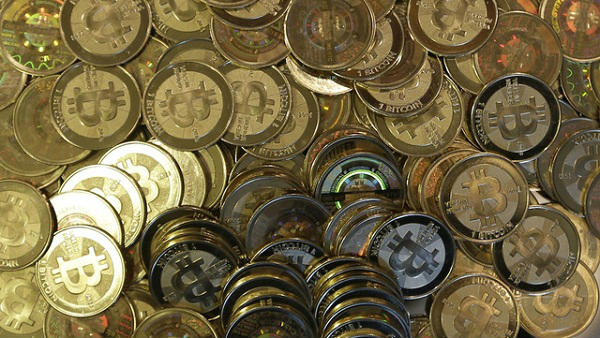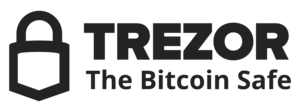The Protocol: 77% of Bitcoin Holders Have Never Used BTCFi, Survey Reveals
source: CoinDesk: Bitcoin, Ethereum, Crypto News and Price Data
2025. Oct. 08. 16:13

Welcome to The Protocol, CoinDesk's weekly wrap of the most important stories in cryptocurrency tech development. I’m Margaux Nijkerk, a reporter at CoinDesk.
In this issue:
BTCFi’s Big Problem: 77% of Bitcoin Holders Haven’t Even Tried It, Says SurveyEthereum’s Fusaka Upgrade Passes Holesky Test, Moves Closer To MainnetDoubleZero Mainnet Goes Live With 22% of Staked SOL on BoardBee Maps Raises $32M to Scale Solana-Powered Decentralized Mapping NetworkUnknown block type "divider", specify a component for it in the `components.types` optionNetwork News
BITCOIN HOLDERS HESITANT TO EXPLORE BTC DEFI : Bitcoin decentralized finance (DeFi), also known as BTCFi, has been touted as the next wave of innovation for the world’s largest cryptocurrency. However, research suggests bitcoin holders themselves are barely engaging. Some 77% of bitcoin holders have never tried a BTCFi platform, according to a survey of more than 700 respondents across North America and Europe by BTC mining ecosystem GoMining. Just over 10% reported having experimented once or twice, while only 8% said they actively use BTCFi services for yield or lending. The survey highlights a stark disconnect between the sector’s promise and its actual reach. “There’s an enormous appetite for these opportunities, but the industry has built products for crypto natives, not for everyday bitcoin holders,” said GoMining CEO Mark Zalan in a statement. That appetite shows up in the data: 73% of respondents expressed interest in earning yield on their BTC through lending or staking, while 42% want access to liquidity without selling. Yet hesitation dominates. More than 40% said they would allocate less than 20% of their holdings to BTCFi products, underscoring the sector’s trust and complexity problem. — Jamie Crawley Read more.
ETHEREUM FUSAKA UPGRADE ON HOLESKY TESTNET GOES LIVE: Ethereum’s next upgrade, Fusaka, just moved closer to going live on the main blockchain after a successful test run on the Holesky test network last week. The Fusaka hard fork comes only a few months after Ethereum’s major Pectra upgrade and is designed to make things cheaper for institutions using Ethereum. One of the changes it introduces is PeerDAS, a feature that lets validators check only part of the data needed instead of full chunks (“blobs”), which helps cut costs for both layer-2 networks and validators. Test networks like Holesky act as practice grounds where developers can safely test new code before it reaches the real chain. Holesky, launched in 2023, was particularly important because its validator setup closely mirrors Ethereum’s mainnet. But over the past few months, Holesky has started showing signs of age and reliability issues. Fusaka is the last upgrade the network will see before it shuts down — two weeks after Fusaka goes live on mainnet. The next two testnet runs are scheduled for October 14 and 28. After those are complete, Ethereum developers will lock in a date for Fusaka’s full mainnet launch. — Margaux Nijkerk Read more.
DOUBLEZERO MAINNET GOES LIVE: A new project wants to give blockchains their own “fast lane” on the internet. The DoubleZero Foundation announced that its highly anticipated mainnet-beta is live. DoubleZero is a network built to speed up how blockchain validators talk to each other. Instead of relying on the public internet, which can sometimes be slow and unpredictable, Solana validators can now connect through DoubleZero’s fiber routes, which let users transact faster. In simple terms, DoubleZero is like a private highway system for blockchains. While normal internet routes are designed to be cheap and broad, they aren’t built for the split-second coordination thousands of blockchain nodes need. DoubleZero says its network reduces lag and makes it easier for validators to process transactions and stay in sync, which could improve both performance and reliability for end users. The project has already seen early adoption. Currently, 22% of staked SOL is plugged into the DoubleZero network. Big industry names like Jump Crypto, Galaxy, RockawayX, and Jito are contributing fiber links and engineering resources, betting that faster internet infrastructure will pay off as blockchain applications scale. — Margaux Nijkerk Read more.
BEE MAPS RAISES $32M IN FUNDING ROUND: Bee Maps, the decentralized mapping project powered by Hivemapper, has raised $32 million in fresh funding to expand its global contributor network and scale its infrastructure, it announced this week. The round was led by Pantera Capital, LDA Capital, Borderless Capital and Ajna Capital, marking one of the largest financings in the decentralized physical infrastructure (DePin) sector this year. Bee Maps is an application on the Hivemapper network, which is one of the largest decentralized physical infrastructure networks (DePIN) focused on mapping data on Solana. Hivemapper enables drivers to contribute data through AI-enabled dash cams, which detect real-time changes on roads (like new signs on the roads, detours, or construction zones), ensuring digital maps can update quickly to stay accurate. Bee Maps leverages this infrastructure by rewarding contributors with its native token, $HONEY, for collecting street-level imagery. The raise highlights strong investor appetite for Bee Maps’ vision of real-time, AI-powered maps. In recent months, Bee Maps has teamed up with major players including Lyft and Volkswagen’s robotaxi program to bring its mapping-data to their platforms. The fresh capital will be used to distribute more devices, enhance AI models that process and update map features and boost contributor incentives tied to $HONEY. – Margaux Nijkerk Read more.
Unknown block type "divider", specify a component for it in the `components.types` option




